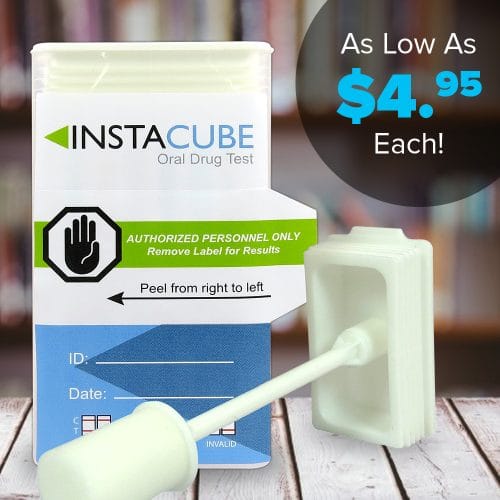Urine sample adulteration is serious problem in workplace and personal drug testing. Adulterating a sample is usually achieved by substitution, dilution or the addition of adulterants including so called “masking agents” sold over the counter. Adulteration is defined as the tampering or manipulation of a urine specimen with the intention of altering the test results. Using adulterants can cause false negative results in drug tests by either interfering with the screening test and/or destroying the drugs present in the urine. diluting a urine sample may also be employed in an attempt to produce false negative drug test results. One of the best methods to test for adulteration or dilution is to check certain urinary characteristics such as creatinine, pH, and specific gravity and to detect the presence of glutaraldehyde, nitrite and oxidants /pyridinium chlorochromate (PCC) in urine. Drugtestsinbulk.com also recommends securing the restroom properly before testing an individual. This may include taping off the toilet top, sink faucets and other running water possibilities.
At Drugtestsinbulk.com we have an amazing S.V.T.(Specimen Validity Test)
The One Step S.V.T. strip is a semi quantitative, color comparison screen for the detection of creatinine, nitrite, glutaraldehyde, pH, specific gravity, and oxidants/pyridinium chlorochromate (PCC) in human urine. The test is intended as a point of testing adulterant pre-screen test of urine samples prior to further testing. The One Step S.V.T. test will detect for all the commonly used methods of sample manipulation and adulteration including dilution, substitution, chemical additives and the so called commercially available “cleansing agents”. Each of the plastic strips contains six (6) chemically treated reagent pads. One (1) minute following the activation of the reagent pads by the urine sample, the colors that appear on the pads can be compared with the printed color chart on the canister. The color comparison provides a semi quantitative screen for creatinine, nitrite, glutaraldehyde, pH, specific gravity, and oxidants/pyridinium chlorochromate (PCC) in human urine which can help assess the integrity of the urine sample prior to further testing.
PARAMETERS TESTED:
Creatinine is a waste product of creatine; an amino acid contained in muscle tissue and found in urine. A person may attempt to foil a drug test by drinking excessive amounts of water or diuretics such as herbal teas to “flush” the system. Creatinine and specific gravity are two ways to check for dilution and flushing, which are the most common mechanisms used in an attempt to circumvent drug testing. Low creatinine and specific gravity levels may indicate diluted urine. The absence of creatinine (<5mg/dl) is indicative of a specimen not consistent with human urine.
Specific gravity tests for sample dilution. The normal range for specific gravity is from 1.003 to 1.030. Values outside this range generally indicate specimen dilution or adulteration.
Nitrite tests for commonly used commercial adulterants such as “Klear” or “Whizzies”. They work by oxidizing the major cannabinoid (marijuana) metabolite THC COOH². Normal urine should contain no trace of nitrites. Positive results generally indicate the presence of an adulterant.
Glutaraldehyde tests for the presence of an aldehyde. Adulterants such as “UrinAid” and “Clear Choice” contain glutaraldehyde which may cause false negative screening results by disrupting the enzyme used in some immunoassay tests. Glutaraldehyde is not normally found in human urine; therefore, detection of glutaraldehyde in a urine specimen is generally an indicator of adulteration.
pH tests for the presence of acidic or alkaline adulterants in urine. Normal pH levels should be in the range of 4.0 to 9.0. Values outside of this range may indicate the sample has been altered.
Oxidants/PCC (Pyridinium Chlorochromate) tests for the presence of oxidizing agents such as bleach and hydrogen peroxide. Pyridinium chlorochromate (sold under the brand name “UrineLuck”) is a commonly used adulterant. Normal human urine should not contain oxidants or PCC.


